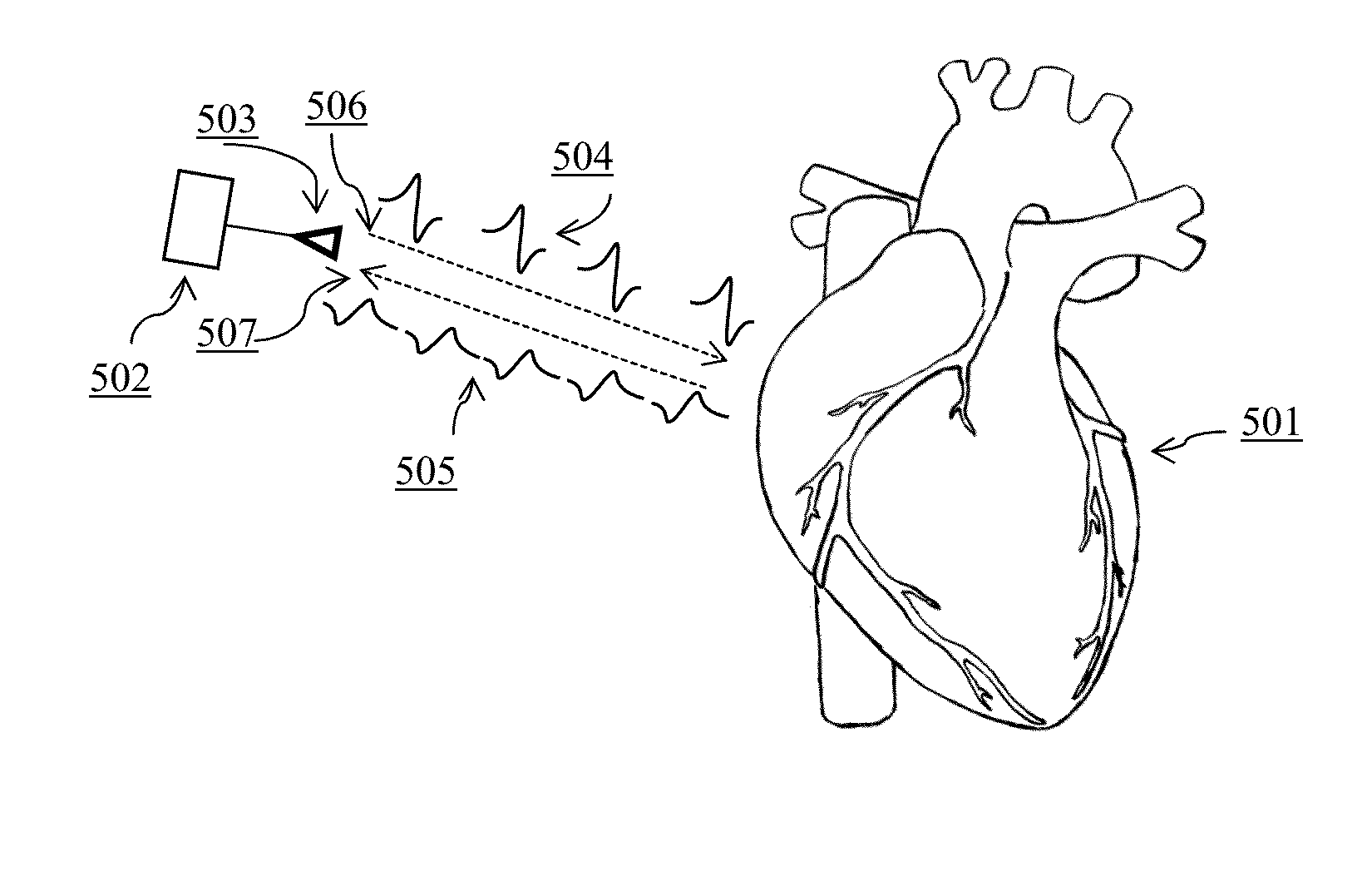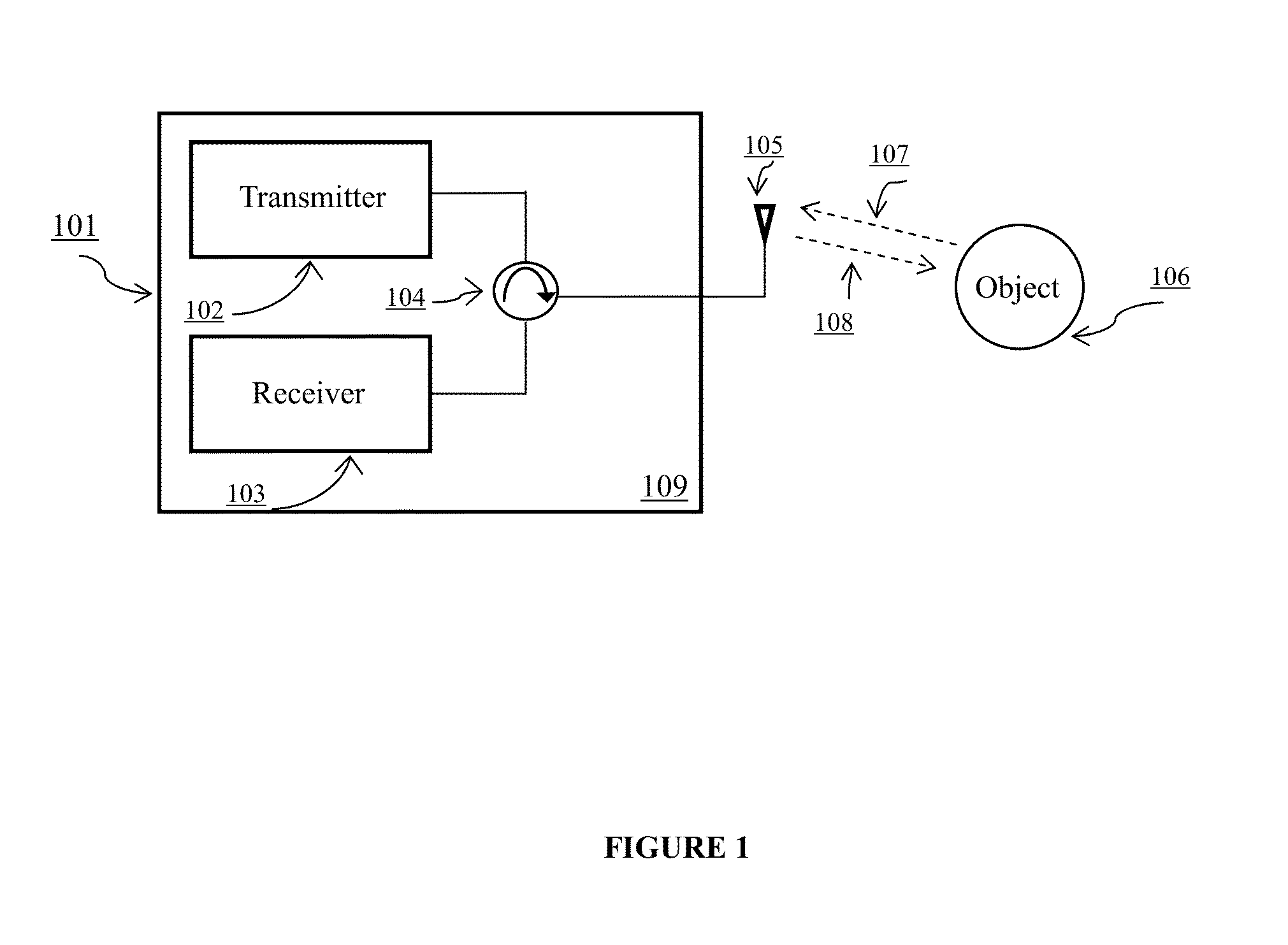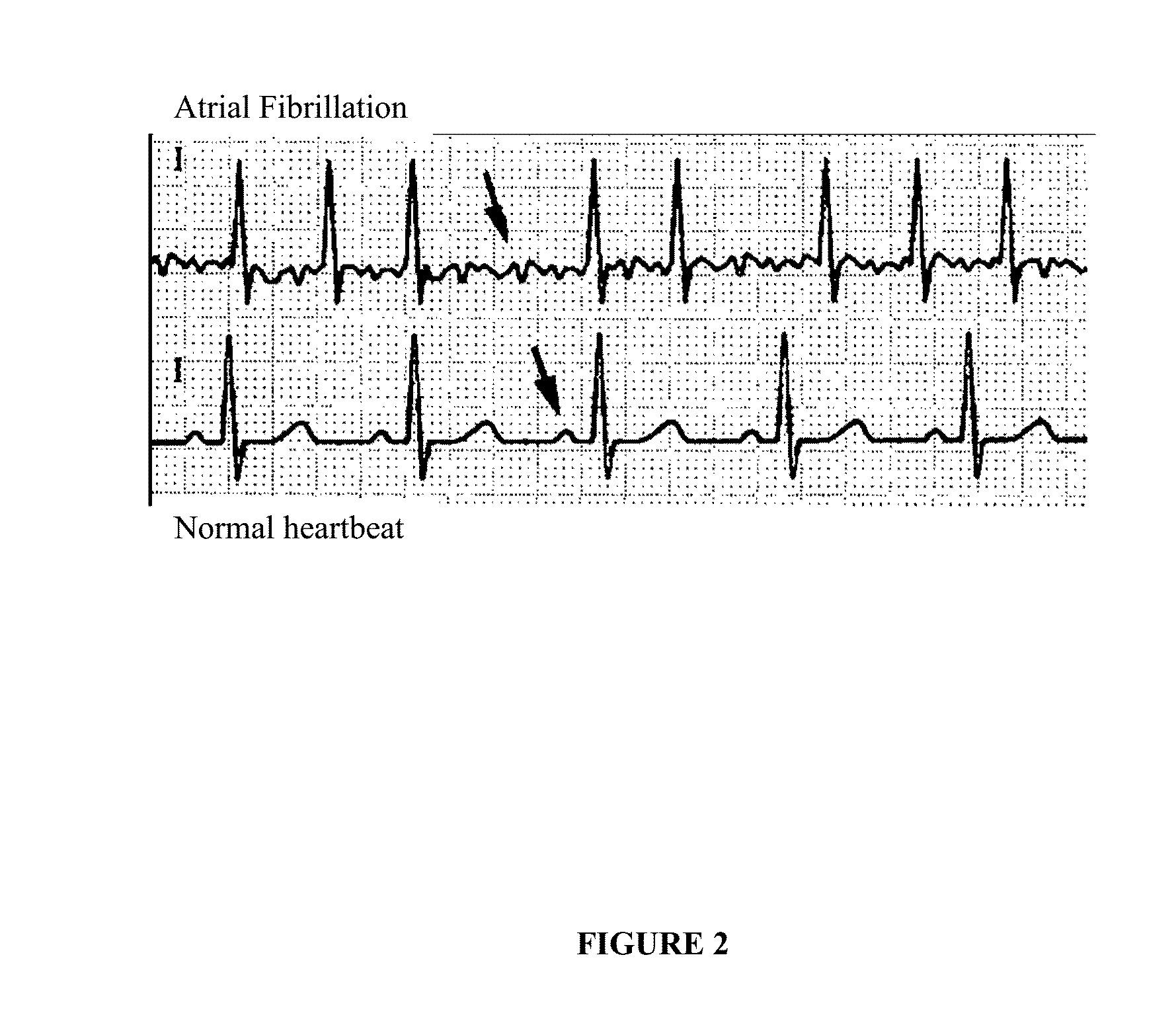Portable Heart Motion Monitor
a heart motion and monitor technology, applied in the field of portable heart motion monitors, can solve the problems of difficult use, high cost, and uncomfortable current home testing devices
- Summary
- Abstract
- Description
- Claims
- Application Information
AI Technical Summary
Benefits of technology
Problems solved by technology
Method used
Image
Examples
example 1
Analysis of Signal Loss Inside Human Tissues
[0099]Performance can be optimized by positioning a device on a subject for minimal signal loss in tissue. FIG. 6 illustrates the tissue thickness, in inches, of skin, fat, muscle, and bone anterior to the heart of a human. The amount of muscle tissue is relatively low. When radar signals were radiated through various tissues including skin, fat, muscle, and bone, the greatest loss of radar signal occurred in the muscle tissue, as demonstrated in FIG. 7.
[0100]The loss of signal intensity was correlated positively with the frequency of the signal, as shown in FIG. 7. When the frequency (GHz) of the signal was increased, the total loss of signal (dB) was most significant in the muscle, while other tissues only accounted for a minor portion of signal loss. This analysis further indicated that the sternum, having minimal musculature, should be an effective placement for the device. This placement allows for less signal loss and dispersion.
example 2
Modeling Methodology
[0101]To calculate the interaction of transmitted signals generated by a device described herein with heart muscles, a three-dimensional full-wave simulation was employed. In this simulation, a three-dimensional model of the heart, or chest cavity, was used. First, the complexity of the model was reduced by removing portions of the chest cavity that do not move, and thus are not relevant for modeling the motion of the heart. Next, the heart model was imported into a wave simulation program to determine the signal received at the antenna in the form of a magnetic or electric field distribution. Finally, the extracted waveforms were fed into a circuit simulator to determine the correlation between the output signal and the motion of the heart.
example 3
Computer Architectures
[0102]Various computer architectures are suitable for use with the invention. FIG. 8 is a block diagram illustrating afirst example architecture of a computer system 800 that can be used in connection with example embodiments of the present invention. As depicted in FIG. 8, the example computer system can include a processor 802 for processing instructions. Non-limiting examples of processors include: Intel Core i7™ processor, Intel Core i5™ processor, Intel Core i3™ processor, Intel Xeon™ processor, AMD Opteron™ processor, Samsung 32-bit RISC ARM 1176JZ(F)-S v1.0™ processor, ARM Cortex-A8 Samsung S5PC100™ processor, ARM Cortex-A8 Apple A4™ processor, Marvell PXA 930™ processor, or a functionally-equivalent processor. Multiple threads of execution can be used for parallel processing. In some embodiments, multiple processors or processors with multiple cores can be used, whether in a single computer system, in a cluster, or distributed across systems over a netw...
PUM
 Login to View More
Login to View More Abstract
Description
Claims
Application Information
 Login to View More
Login to View More - R&D
- Intellectual Property
- Life Sciences
- Materials
- Tech Scout
- Unparalleled Data Quality
- Higher Quality Content
- 60% Fewer Hallucinations
Browse by: Latest US Patents, China's latest patents, Technical Efficacy Thesaurus, Application Domain, Technology Topic, Popular Technical Reports.
© 2025 PatSnap. All rights reserved.Legal|Privacy policy|Modern Slavery Act Transparency Statement|Sitemap|About US| Contact US: help@patsnap.com



